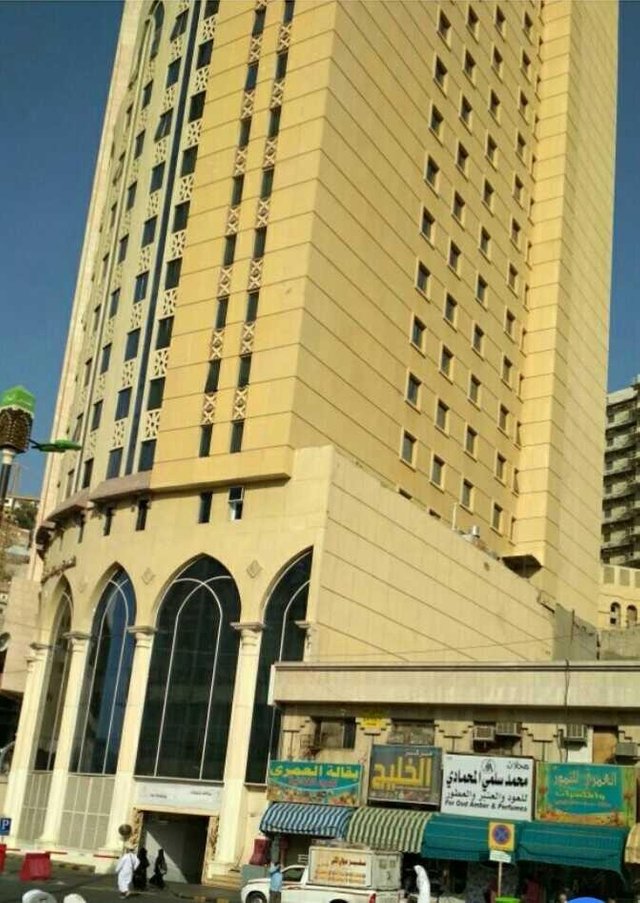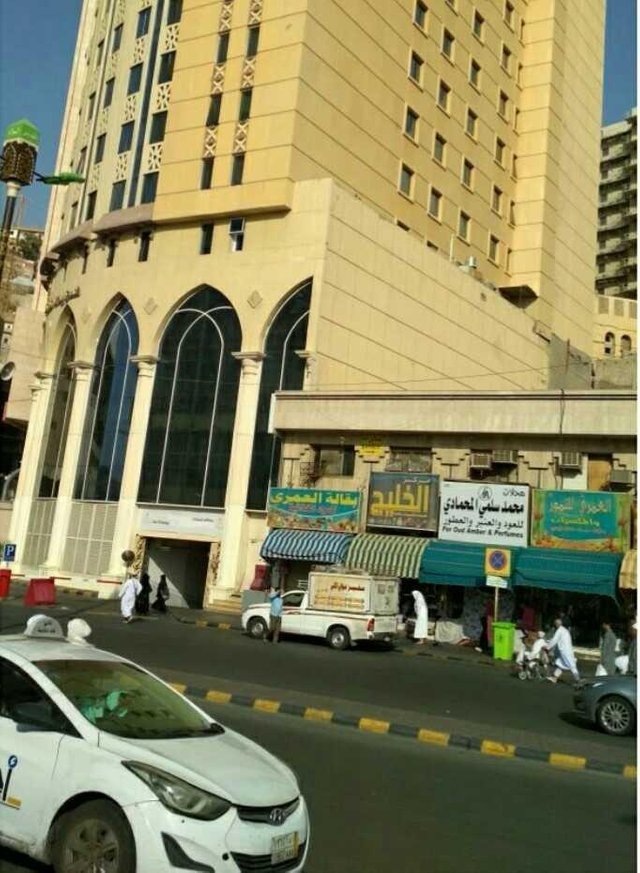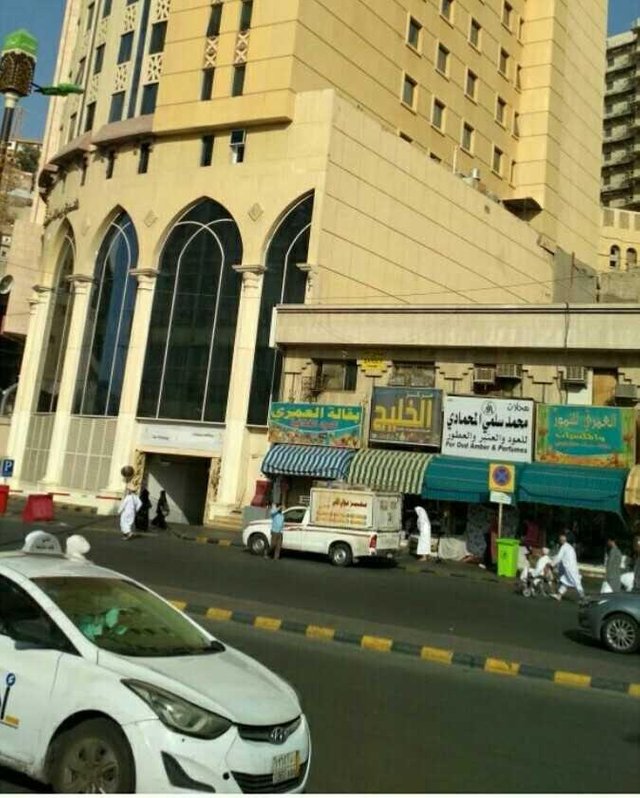
There is Aceh, Pledge of Wakat Land for Aceh Nation in Saudi Arabia
"ASYI", the term 'clan' Aceh among Arabs. This Asyi title (Aceh-in Arabic) is an acknowledgment of identity for every Acehnese in honorable Saudi Arabia, so that the title of "al-asyi" can then be regarded as one of the Acehnese clans manifested in the Arab Land.
The term Aceh is familiar to some Arabs although it is now only one of the provinces of the country. Therefore, I see that the dignity of the Acehnese in Saudi Arabia is remarkable. So far, this title is not so much, but considering the contribution of Asyi to the Kingdom of Saudi Arabia, I believe that there is an emotionally strong connection between this Arab land and its Serambinya, Aceh.
A lot of Arab descendants of Aceh are well placed in the kingdom of Saudi Arabia such as the late Syech Abdul Ghani Asyi the former head of the Middle East Red Crescent, Alm Dr Jalal Asyi, former deputy health minister of Saudi Arabia, DR Ahmad Asyi, former deputy minister of Haj and waqf and many Aceh's endowment's wealth is still a form there.
We will reveal the unbalanced tradition of donating Acehnese people in the Land of Hijaz (Mecca, Saudi Arabia) in the 17th century AD. It is interesting that we know how Aceh contributes to the land of hijaz (now Saudi Arabia, red), where the Acehnese not only donate the land, but also the gold imported from Earth Serambi to the land of Mecca Al-Mukarramah.
It was narrated that in 1672 AD, Sharif Barakat of Mecca at the end of the 17th century sent his ambassador to the east. Seek donations for the maintenance of the Grand Mosque. Because the Arab condition at that time was still in poor condition. The arrival of mareka to Aceh after King Moghol, Aurangzeb (1658-1707) was unable to fulfill the wishes of Sharif Barakat. He had not been able to donate as usual to the Grand Mosque. After four years this group of Mecca was hanging up in Delhi India. On the advice of the authorities there, the group left for Aceh and arrived in Aceh in 1092 H (1681 AD).
Up in Aceh, this Mecca ambassador was welcomed and served well and honored by Sri Ratu Zakiatuddin Inayatsyah (1678-1688 AD). Unexpectedly, the arrival of the Meccan Sharif delegate sparked the spirit of the wujudiyah group that was against the rule of women. However, because the figure of Sultanah Zakiatuddin who is' pious and able to speak Arabic fluently. Even historically, he spoke with these guests by using a veil from Dewangga's sutra (Jamil: 1968).
The Arab envoy was very happy to be received by Queen Ratu Zakiatuddin, for they did not get a similar service when in New Delhi, India. Even four years in India, can not meet Aurangzeb.
When they returned to Mecca, Sri Ratu Zakiatuddin Inayat Shah, gave a sign to the party and Sharif Mecca also donated to the Grand Mosque and and the Mosque of Nabawi in Medina consisted of: three pure gold kinthar, three rathal kamfer, sandalwood and civet (jeuebeuet civet), three golden gulyuns, two golden legs (panyot-dong), five gold chandeliers for the Grand Mosque, lamps and golden candlesticks for the Nabawi Mosque.
In 1094 (1683 AD) they returned to Mecca and arrived in Mecca in the month of Shaytaan 1094 H (September 1683 AD). Two brothers from this group of Mecca ambassadors, Syarif Hasyim and Syarif Ibrahim, remained in Aceh at the request of the Acehnese ladies in the anti king of women (Jamil: 1968). They were persuaded to remain in Aceh as honorable men and gave religious instruction and one of them, married to Kamalat Shah, Zakiatuddin Shah's younger brother.
Five years later after the Meccan ambassador returned to Hijaz by leaving Syarif Hashim and Sharif Ibrahim in Aceh, Sultan Ratu Zakiatuddin Inayat Syahwafat on Sunday 8 Zulhijjah 1098H (3 October 1688 AD). The Aceh government was replaced by his sister, Seri Ratu Kamalatsyah, who also has Putroe Punti. He was appointed the Queen of the Acehnese royal government on the advice of Sheikh Abdurrauf Al Fansury who acted at that time as Waliyul-Mulki (Wali Raja).
Only after the death of Sheikh Abdurrauf on the evening of 23 Syawal 1106 H (1695 AD), the conflict over the status of the Aceh government under the queen rule that had lasted 54 years since Safiatuddin Shah (1641-1675M), was re-shaken. This is triggered by the fatwa of Qadhi Mecca arrived. Historically, this "import fatwa" arrived with the "merits" of the queen's opposition. Then the Aceh government, handed over to the Arab-blooded ruler, one of the two messengers of Sharif from Mecca, the husband of Queen Kemalatsyah, Syarif Hasyim became king on Wednesday 20 Rabi`ul Akhir 1109 H (1699M).
Historically, the Queen was impeached due to the "fatwa import" is. Then the kingdom of Aceh has a leader who titled Sultan Jamalul Alam Syarif Hasyim Jamalullail (1110-1113 H / 1699-1702M). with the ruling of early Syarif Hashim from the Arab dynasty rule of Aceh until 1728 AD This is historical evidence that the power of the queens in Aceh that had lasted 59 years disappeared after the intervention of the Meccans, after these queens donated gold to it. A 59-year-old Aceh led by women could be a testament to how the actual level of women's emancipation in Aceh (Azyumardi Azra, 1999).
Associated with the gold donation given by the Queen to the entourage of Mecca, it turns into a conversation and debate in Mecca. It is mentioned that this history is recorded in the history of Mecca where it is mentioned that gold and the Sultanah of Aceh arrived in Mecca in the month of Syakban 1094 AH / 1683 AD and at that time Syarif Barakat had died. The reign of Mecca was replaced by his son Sharif Sa'id Barakat (1682-1684 AD).
Snouck Hurgronje, said "The Delivery of a Mecca Ambassador to Aceh in 1683" was amazed at the greatness of Aceh in the past and recorded in his book, where he arrived in Mecca in 1883. Because of the National Heritage and the Kingdom of Aceh, Mecca called Aceh "Veranda of Mecca" there.
It turned out that the donation of the Kingdom of Aceh 200 years ago is still always warmly discussed there. According to the historical records of Mecca he learned that the gift items had been stored in the house of Sharif Muhammad Al Harith before being distributed to the Sharifs who were entitled to three-quarters of the gifts and alms given to the poor and the rest were handed over to the Grand Mosque and the Nabawi Mosque.
Similarly, Acehnese wakaf traditions in the Arab land as an example of a general waqf tradition, is the wakaf habib Bugak Asyi who came before Mahkmah Shariyah judges of Mecca on 18 Rabiul End of year 1224 H. In front of the judge he expressed his desire to donate a piece of land with a house two levels above it on condition; the house was used as a place of residence pilgrims from Aceh origin who came to Mecca to perform the pilgrimage and also for the residence of people from Aceh who settled in Mecca.
If for any reason there are no more Acehnese who come to Mecca for the pilgrimage, this wakaf house is used for the residence of the students (santri, students) Jawi (archipelago) who studied in Mecca. Had it been for something because students from the archipelago were no longer learning in Mecca then this wakaf house was used for the residence of Mecca students who studied at the Grand Mosque. Had they not existed then this wakaf was handed over to the Imam of the Haram Mosque to finance the needs of the Haram Mosque.
Historically, it is not only the wakaf habib Bugak that is in Mecca, which now the result can be enjoyed by the pilgrims from Aceh every year approximately 2000 rials per pilgrim. Relics of Aceh in Mecca is not only a gold donation during the reign of this queen is also a treasure of waqf property that still manifests to this day such as:
Wakaf Shaykh Habib Bugak Al Asyi ', Wakaf Shaykh Muhammad Saleh Asyi and his wife Shaykh Asiah (certificate No. 324) in Qassasyiah, Waqf Sulaiman bin Abdullah Asyi at Suqullail (Pasar Seng), Wakaf Muhammad Abid Asyi, Wakaf Abdul Aziz bin Marzuki Asyi, Wakaf Datuk Muhammad Abid Panyang Asyi in Mina, Wakaf Aceh on Suq Al Arab Road in Mina, Wakaf Muhammad Saleh Asyi on Jumrah ula in Mina, Wakaf House in Baladi area in Jeddah, Wakaf House in Taif, Wakaf House in Hayyi al-Hijrah Mecca. Waqf House in the area of Hayyi Al-Raudhah, Mecca, Wakaf House in Al Aziziyah, Makkah. Wakaf Aceh in Suqullail, Zugag Al Jabal, in Gazzah area, unknown to his pewakaf. Syech Abdul Rahman bin Jamaluddin Bawaris Asyi (Tgk Syik in Awe Geutah, Peusangan) in Shamiah Mecca, Syech Abdussalam bin Jamaluddin Bawaris Asyi (Tgk in Meurah, Samalanga) in Shamiah, Abdurrahim bin Abdullah bin Muhammad Asyi in Shamiah and Chadijah bint Muhammad bin Abdullah Asyi in Shamiah.
This is proof of how generous between the worship and deeds of the Acehnese people in Mecca. They prefer to donate their property, rather than to be enjoyed by their own families. However, seeing the experience of Waqf Habib Bugak, presumably the people of Aceh can already enjoy the results now.
This phenomenon and spirit is still difficult to meet the people of Aceh today, because the tradition of land waqf is no longer dominant. Therefore, I consider that the ancestral traditions of the Acehnese who have made many of the land in Saudi Arabia need to serve as examples of very high-level models. This is also triggered by the honesty of the management of waqf in this country, where all the wakaf property is still recorded neatly in the Syariah Court of Saudi Arabia.
As a proof of how honest the management of waqf in Saudi Arabia, In 2008 Mesjidil haram expanded again the Shamiah and Seng Market. As a result there are 5 parcels of Acehnese wakaf land affected by evictions. The wakaf land belongs to Sulaiman bin Abdullah Asyi, Abdurrahim bin Jamaluddin Bawaris Asyi (Tgk Syik in Awe Geutah, Peusangan), Syech Abdusalam bin Jamaluddin Bawaris Asyi (Tgk in Meurah, Samalanga), Abdurrahim bin Abdullah bin Muhammad Asyi and Chadijah bint Muhammad bin Abdullah Asyi.
In Mecca the writer also met with Saidah Taliah Mahmud Abdul Ghani Asyi and Sayyid Husain a well-known lawyer in Mecca to take care of the 300-duly endowed wakaf land located in a shadow-worn area of Shamiah for the expansion of the northern courtyard of Mecca al Mukarramah haram that listed the plot landed evictions no 608. Which was represented by Syech Abdurrahim Bawaris Asyi (Tgk Syik in Awe Geutah, Peusangan) and his sister Syech Abdussalam Bawaris Asyi (Tgk in Meurah, Samalanga).
Indeed at the origin of 75 percent of the land around the Haram Mosque is a waqf land whether it is a special waqf or a general endowment. And some of it belongs to the people of Aceh first and this part of the glory of Aceh who ever entered the top 5 Muslim countries in the world with Turkey, Morroko, Iran, Mughal India and Aceh Darussalam in Southeast Asia.

According to the Saudi Arabian government regulations the families and nadhirs can seek redress by bringing proof of ownership (necessarily requiring a long process ie tracing who is the land of the endowment, the appointment of a lawyer etc.) and able to face a Mecca religious court demanding compensation and reimbursement of other areas in Mecca so the wakaf land is not lost. If there is no family pewakaf more specifically for the family wakaf then in accordance with the pledge of wakaf will switch belonging to the holy mosque or baital mall. This is the lesson or wisdom of wakaf tradition in Mecca which hopefully can be a good example for the management of waqf in Aceh.
That is a scattered record, about the Acehnese wakaf in Arab Land, although the present generation only recognizes that Aceh is the Veranda of Mecca. But actually there is a series of history that caused Aceh has ever made an important contribution to the guidance of Islamic history in the Middle East. Therefore, in addition to producing Aceh Ulama, in fact in terms of material, the people of Aceh also provide donations and endowments that can still be traced to this day.
Therefore, I strongly suspect that the Islamic tradition has indeed been practiced by the Acehnese at that time, where "the hands above, are better than the hands down". As a result, the honor of the Acehnese is highly respected, both by friends and foes. In this regard, it must be admitted that Snouck has "credited" recording some of the consequences of the Acehnese historical episode of honor.
This is an important lesson for Acehnese history researchers, where in addition to authentic evidence, history can also be written through oral history. This lesson is very important for current generations to track where the Acehnese role in some countries, including in the Middle East.
Here is a little bit of my goodwill to Saudi Arabia and I am absolutely struck by the recognition of the identity of "Asyi" and the pattern of wakaf management in Saudi Arabia. Besides this, in this journey, I was wondering whether the good name of Acehnese in Saudi Arabia can be equal to the good name of Aceh in Indonesia and around the world. What is interesting is that almost every country I visit, the name Aceh is always respected and viewed as part of the world civilization.
